CVA M2: Ch7 lecture notes
1/31
Earn XP
Description and Tags
Remainder of Ch.3 + also Ch.7: The Skull
Name | Mastery | Learn | Test | Matching | Spaced |
|---|
No study sessions yet.
32 Terms
eureptilia
diapsid skull design
lepidosauromorpha- mesosaurs + turtles + fossils + snakes + lizards (parareptilia + lepidosauria)
archosauromorpha- stem groups + thecodonts + crocs, pterosaurs, dinosaurs (ornithischians and saurischians) + birds
archosaurs- crocs, pterosaurs, dinosaurs (ornithischians + saurischians), birds
euryapsida- mesozoic marine reptiles (ichthyosaur + plesiosaur)
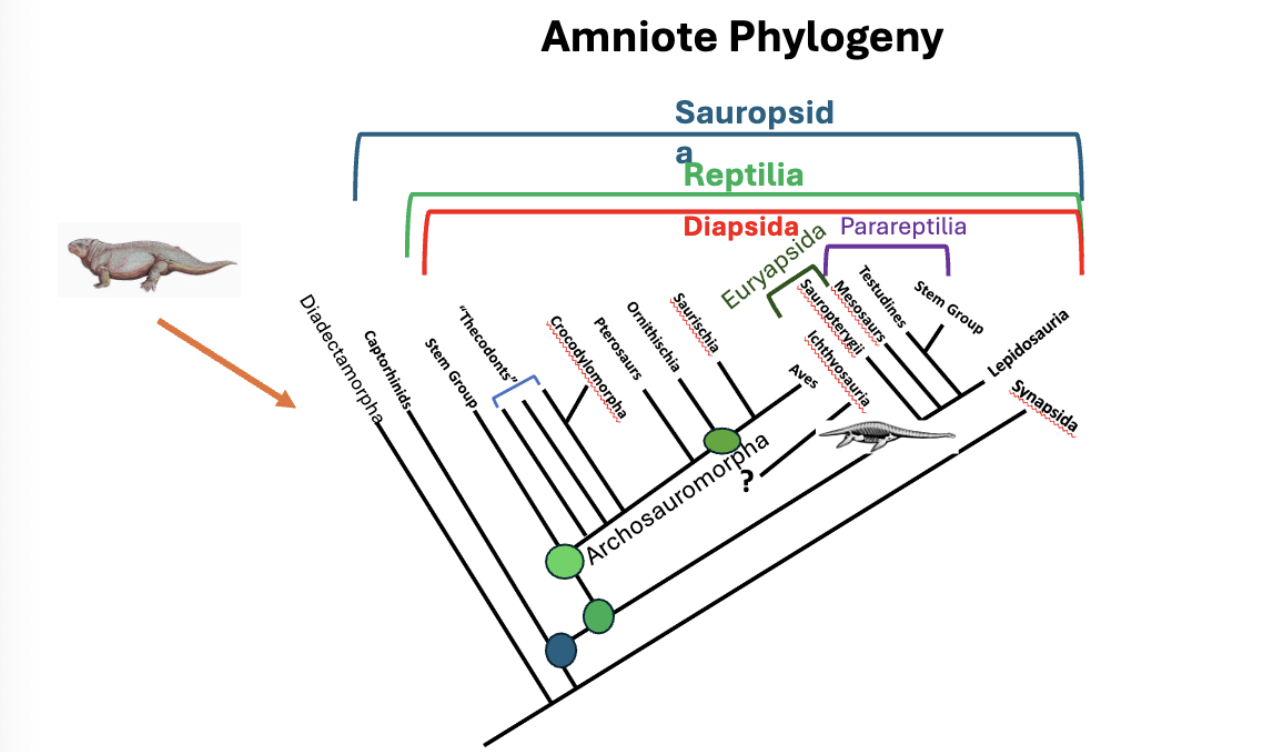
“euryapsids”
ichthyosaurs + sauropterygia (plesiosaurs)
believed to be paraphyletic
sharp teeth, could be big or small
fish + deep sea squid specialists
only 1 fenestration in skull, still diapsids though b/c covered up the other hole?
teeth are continually growing + some fused to upper skull (not seen in mammals)
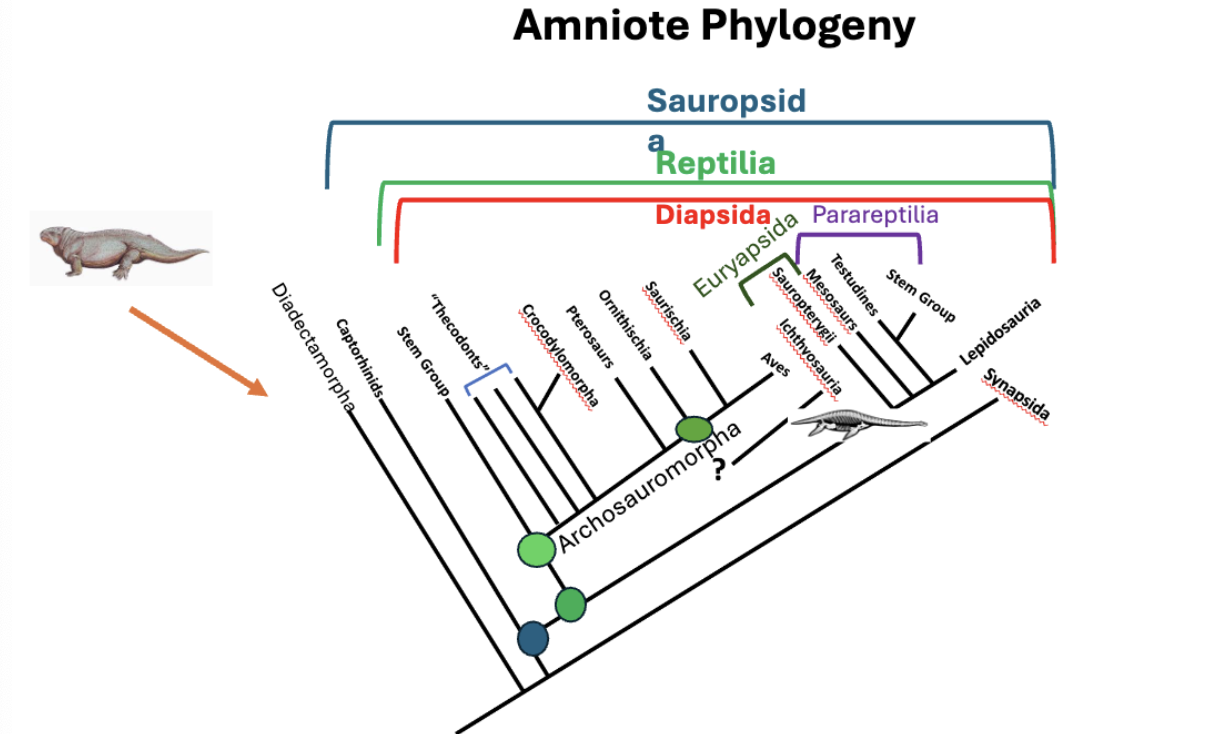
stem amniote: mesosaurs
fully aquatic
webbed feet
laterally compressed tail
anapsid skull
“parareptilia”/reptilia: testudinata
turtles + fossil groups
anapsids
carapace (top of shell), plastron (bottom of shell)
dorsal skeleton fused to carapace
less vertebrae in turtles compared to other reptiles

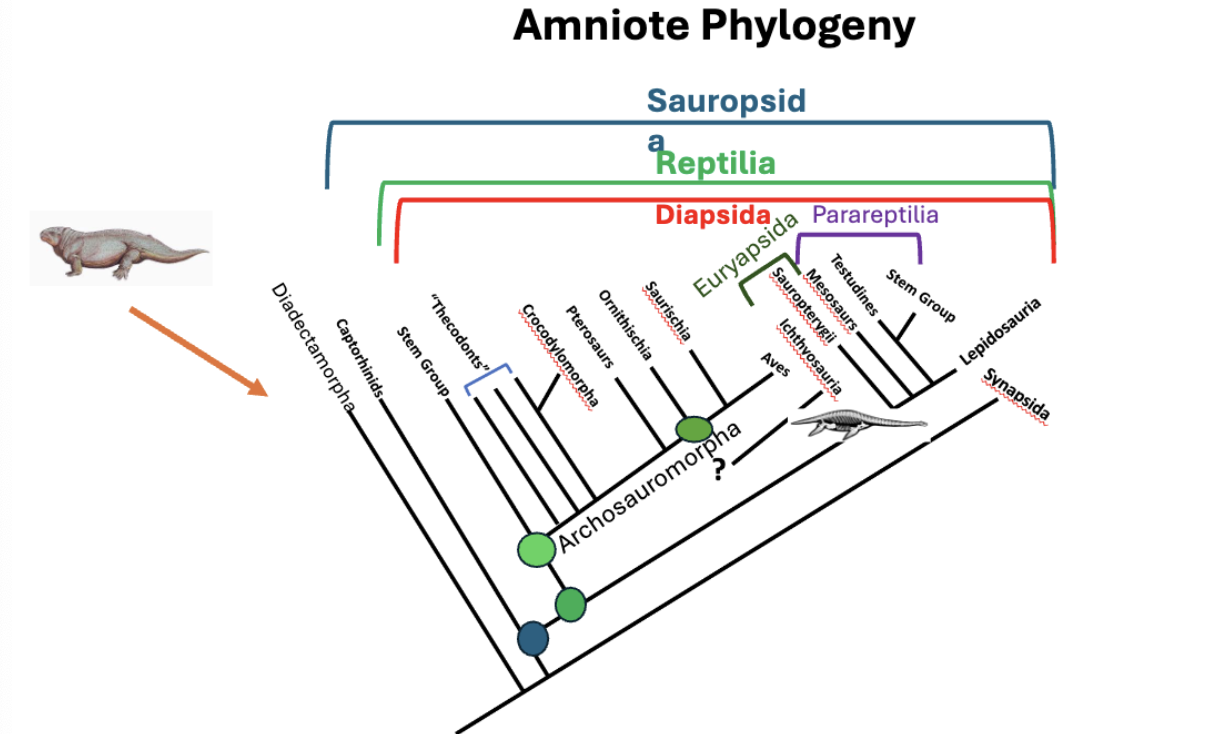
turtle shell
for fossorial and aquatic lifestyles
fused skull (fortified)
shortened limbs
forearms stronger (for digging + swimming)
digits shortened (sometimes webbed)- more strength
strong neck muscles (helpful for turtles ramming against substrate to help them dig)
wide cervical vertebrae (enables to have an increase in SA for neck muscles to attach to)
protection, later
extant testudines
austro-south american, afro-south american
pleurodira= “side neck turtles”
more vertebrae + long slender neck
can’t retract heads b/c neck too long
curve neck around to hide head
fully aquatic + carnivorous
long neck to reach out and grab fish prey + have evolved suction feeding
americas + europe, australasia
cryptodira
variety of diets + locations where they live (more ecologically diverse)
many in US: semi-aquatic or fully terrestrial
turtles + tortoises (more dome shaped shell, live in drier enviornment)

reptilia: lepidosauria
sphenodon + squamates
synapomorphies:
overlapping scales- provides smooth feel
ecdysis- shed their skin (in fragments or whole)
hemipenes- paired copulatory structures in the males, 2 penises (base + it bifurcates)
tail autonomy- can lose tail and grow another one back
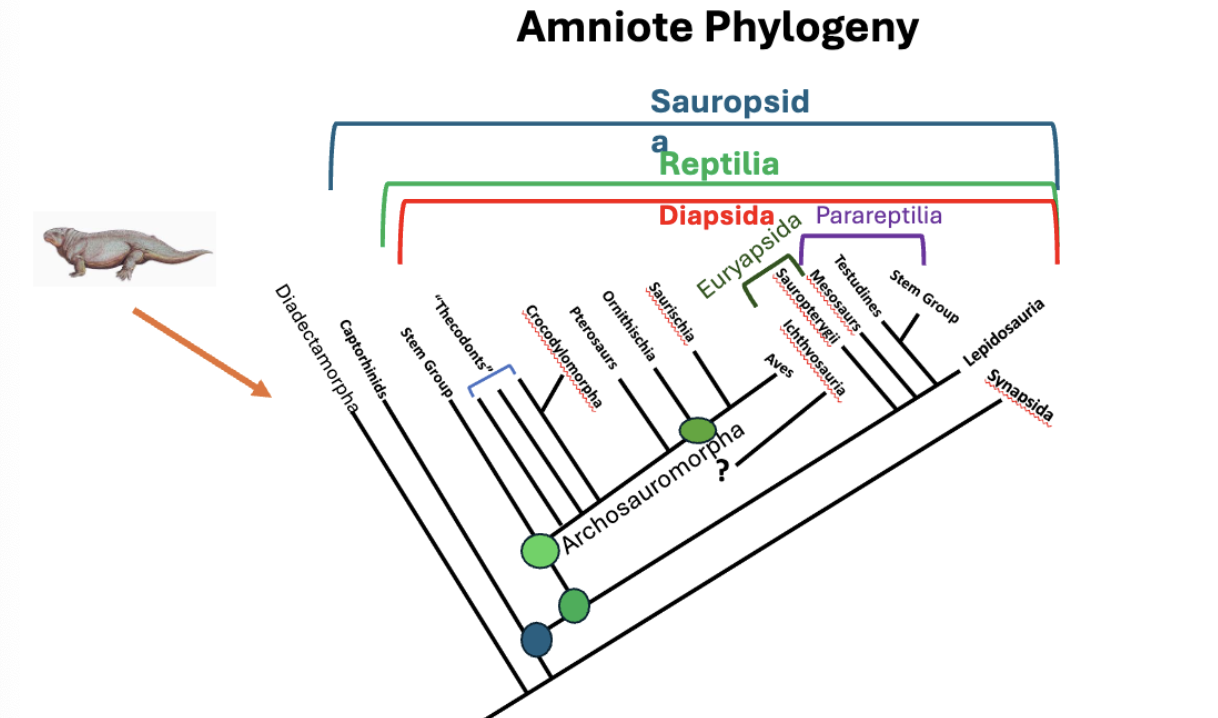
sphenodon
sauropsida→ reptilia → diapsida→ lepidosauria→ ________ + squamates
tuatara, only found in NZ, 2 sp
acrodont teeth (teeth fused to skull, lack roots), 2 rows of teeth
not deciduous
parietal gland @ top of head, allows to have strict circadian rhythm
males have big developed crest
squamates
sauropsida→ reptilia → diapsida→ lepidosauria→ sphenodon + _________
~11k species
lizards (~7000sp) + snakes (serpentes, ~3400sp)
serpentes
sauropsida→ reptilia → diapsida→ lepidosauria→ squamates→ lizards + ________
snakes
~3400 sp
can be small (threaded snakes 6”) or v long (pythons 27-29ft)
obligate carnivores (must eat other animals/meat to survive)
synapomorphies:
elongate
limbless
scales
vestigial pelvis
not all, but some males have claws to scratch female to let her know to mate
remnants of hindlimbs, vestigial structure
carnivorous
kinetic skulls
recurved teeth
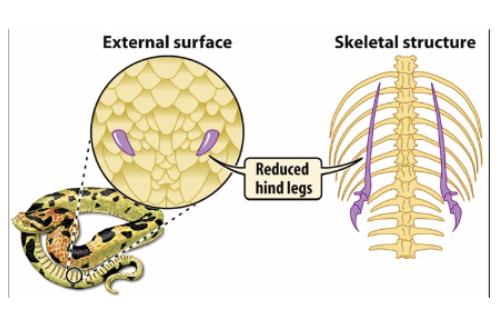
synapsida
gnathostomes→ teleostomi → sarcopterygii → tetrapoda → amniota → sauropsida (eureptilia + parareptilia) + ______ (stem lineages + mammals)
~360mya
stem lineages (always extinct, closest relative to extant lineage we’re looking at) + mammals
1 skull fenestration
jugal + zygomatic process of the squamosal
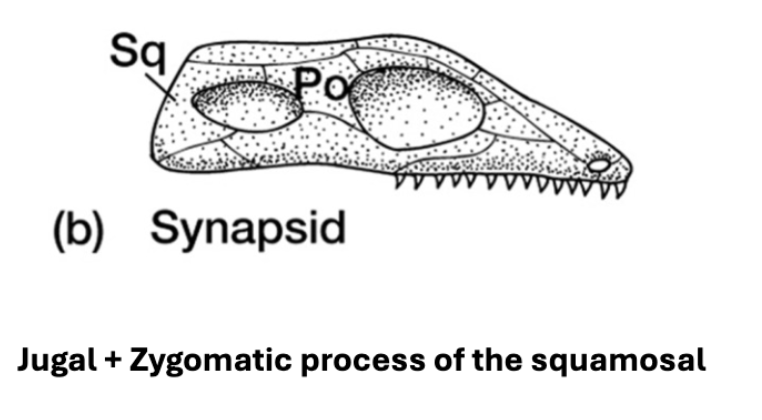
stem mammal lineage: pelycosaurs
late carboniferous→ early permian
diversity of diets: carnivores, herbivores (can tell through teeth + jaw size)
sexually dimorphic, social animals, huge sail like fins across their bodies
vary in size, long tails
stem mammal lineage: therapsids
closely resembling current day mammals
early permian→ triassic
PT extinction → opened up more niches for them to roam
synapomorphies:
slicing teeth
secondary palate= roof of mouth, can breath + eat at same time
nasal turbinates= light bony structures w/ soft tissues, help warm air animal takes in + works as cooling device
reduced in size: dog→ weasel
early mammalia
late triassic (~250 mya)
extant taxa: monotremes + theria (metatheria + eutheria)
synapomorphies:
hirsute (pelage=hair/fur, vibrissae=whisker)= hair growing off body (sensory structures)
mammary glands
heterodont dentition= dif types of teeth, in shape and function
other mammalian synapomorphies
sebaceous glands- gives off scent
anucleated red blood cells
tooth replacement + occlusion (proper alignment of teeth)
enables us to chew- upper + lower incisors match up to not wear out teeth
not consistent, just replace teeth once
middle ear→ 3 ossicles (incus, malleus, stapes)
enable us to hear sound v well in air
prior to this, terrestrial animals herd through reverberations in jaws
monotremes
gnathostomes→ teleostomi → sarcopterygii → tetrapoda → amniota → synapsia→ mammalia→ ______ + theria (metatheria + eutheria)
5 sp
platypus, echidnas
lack nipples
lack external ears (still have 3 inner ear ossicles)
egg layers
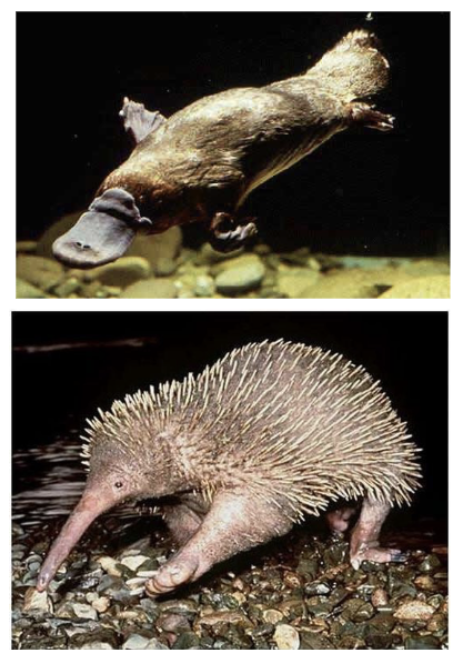
metatheria: marsupials
gnathostomes→ teleostomi → sarcopterygii → tetrapoda → amniota → synapsia→ mammalia→ theria→ ______ + eutheria
~334 sp
live birth
pouch developers
opossums, koala, kangaroo, wombats, sugar glider,
altricial- young not fully developed when born, need more time w/ parent
crawl back into pouch to develop
forelimbs well developed (bc they crawl back into pouch)
eutheria: placental mammals
gnathostomes→ teleostomi → sarcopterygii → tetrapoda → amniota → synapsia→ mammalia→ theria→ metatheria + ______
us
very diverse, on every continent
18 lineages, ~4000 described species worldwide
40% of diversity from rodentia (1,600sp)
edentata= oldest eutherians?
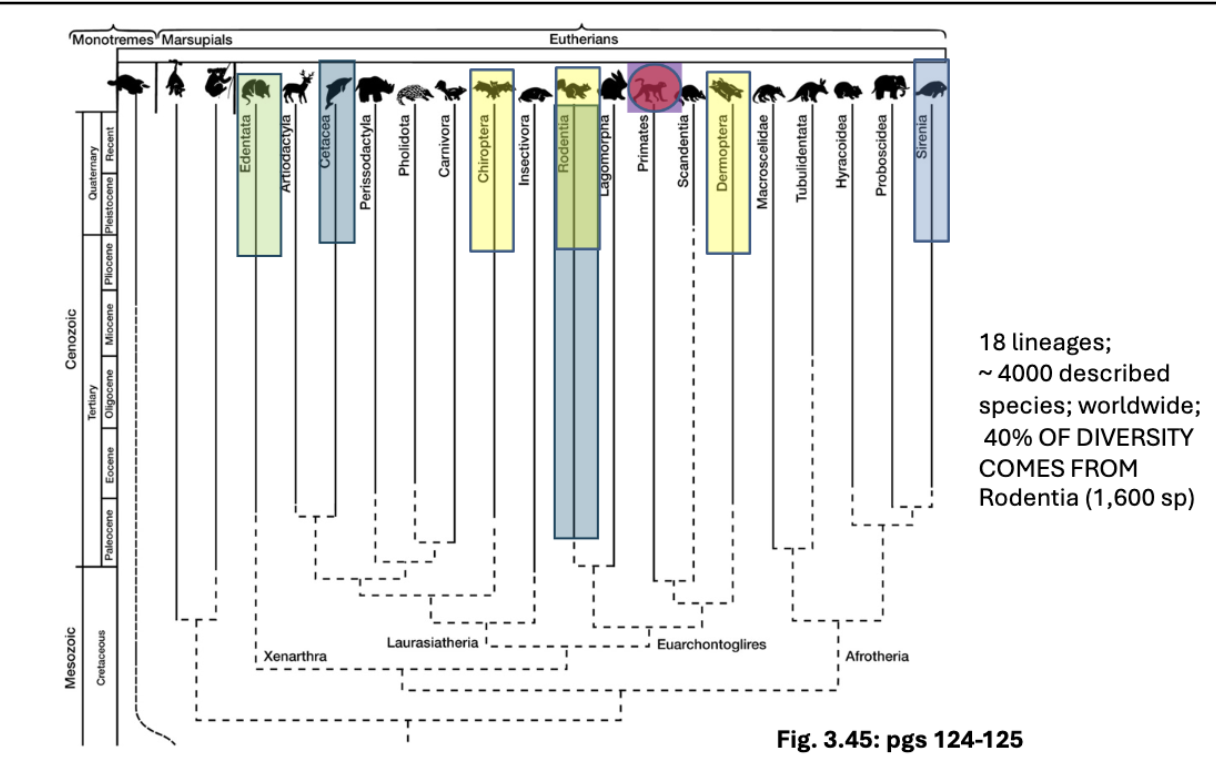
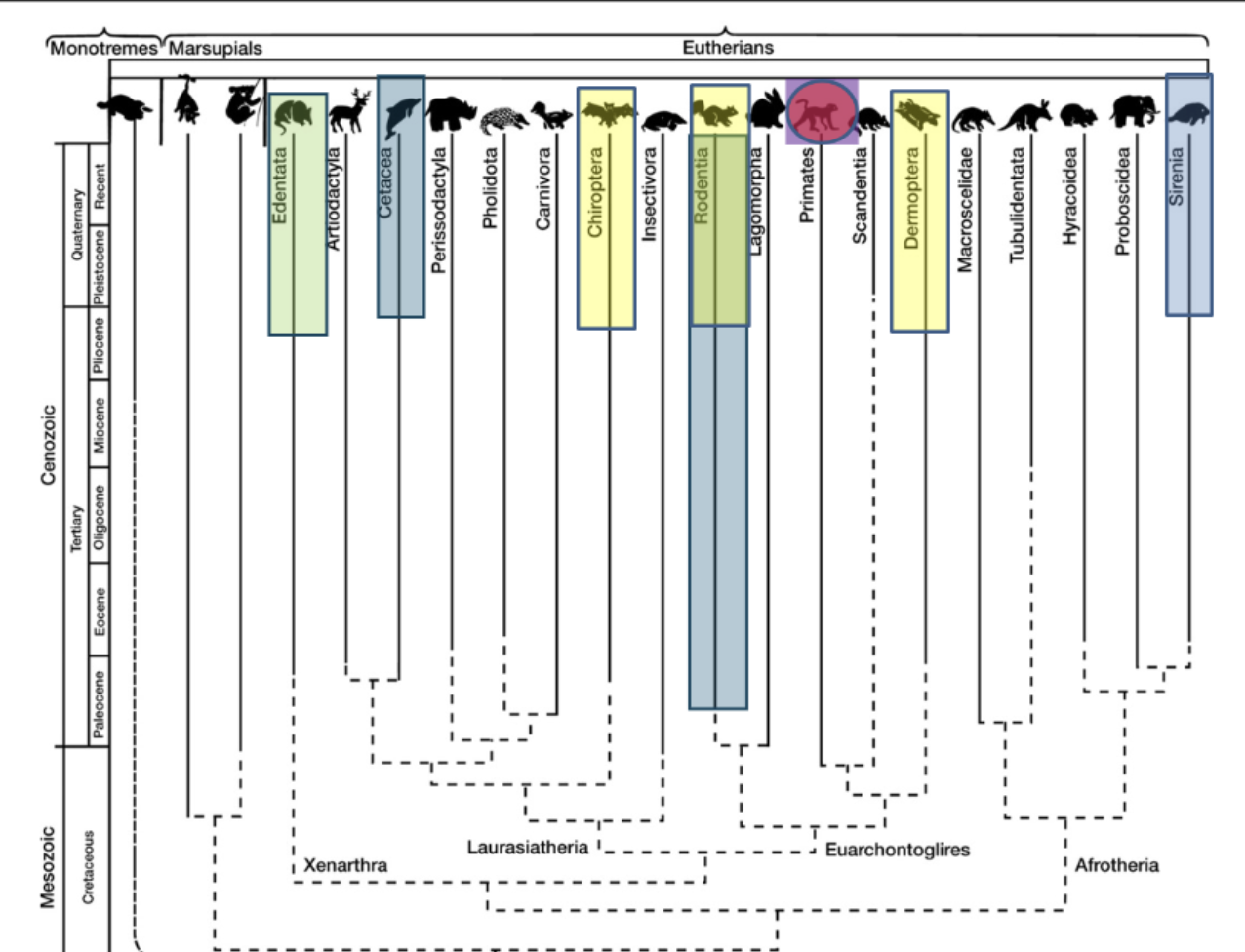
mammalian phylogeny- give examples of what animals are in which groups:
monotremes:
metatherians (marsupials):
eutherians:
edentata-
artiodactyla
cetacea- dolphins, whales
perissodactyla
pholidota
carnivora
chiroptera- bats
insectivora
rodentia
lagomorpha
primates
scandentia
dermoptera
macroscelididae
tubulidentata
hyracoidea
proboscidea
sirenia- manatees + dugongs
amniote skull terms
anapsida- no fenestrations, ex: turtles
synapsida- 1 fenestration, ex: humans
diapsida- 2 fenestrations, ex: reptilia
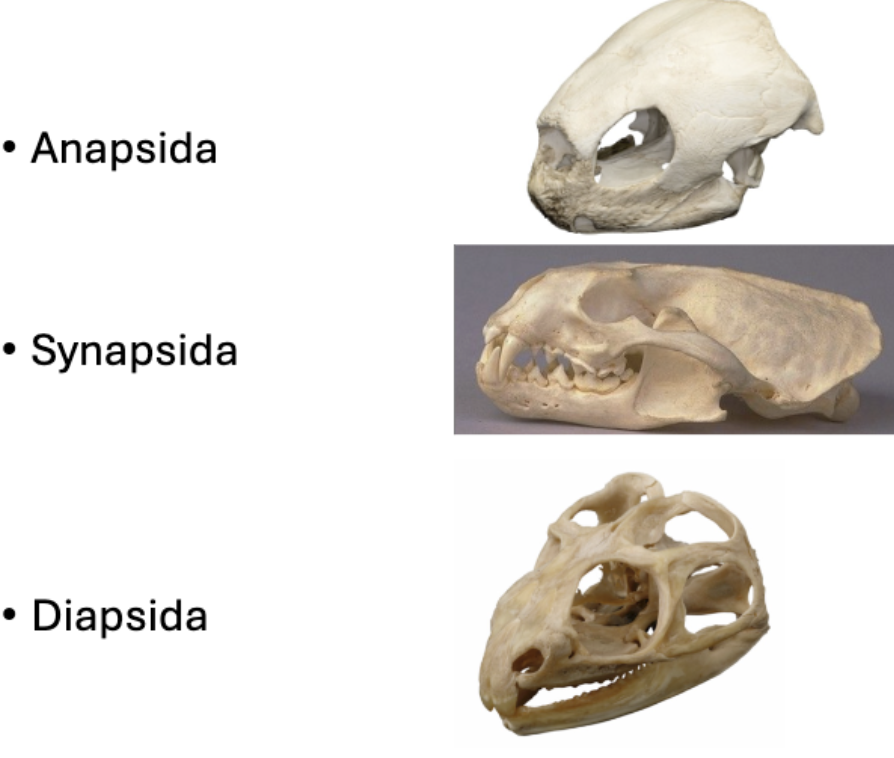
organization of skeletal tissue
skeleton
exoskeleton
keratinized- from epidermis (outer layer of skin)
ex: horns, scales, feathers
bony- from dermis (animals w/ bony sheath)
ex: armadillo, pangolin
endoskeleton (deep w/in, helps propel us + allow us to move)
notochord- 1st endoskeletal component
cartilaginous- 2nd component, protect/form canal for dorsal hollow nerve cord or ventral hollow nerve cord to go through?
bony- 3rd component, can be dif degrees of mineralization
or
skeleton
cranial- everything @ head end
post-cranial- everything after the head
axial- anterior to posterior axis
appendicular- shoulder + pelvic girdles + arms + legs, everything that juts-out?
cranial skeleton
splanchnocranium
chondrocranium
dermatocranium
(^developmental order)

splanchnocranium
part of cranial skeleton
derived from pharyngeal slits in protochordates
v soft tissue
chondrocranium
part of cranial skeleton
neurocranium, protects brain, cartilaginous/endochondral bone
squishy bone, not mineralized, provides integrity + stiffness around chondrocranium
dermatocranium
part of cranial skeleton
outer casing, dermal bone
diversity you see in skull comes from this